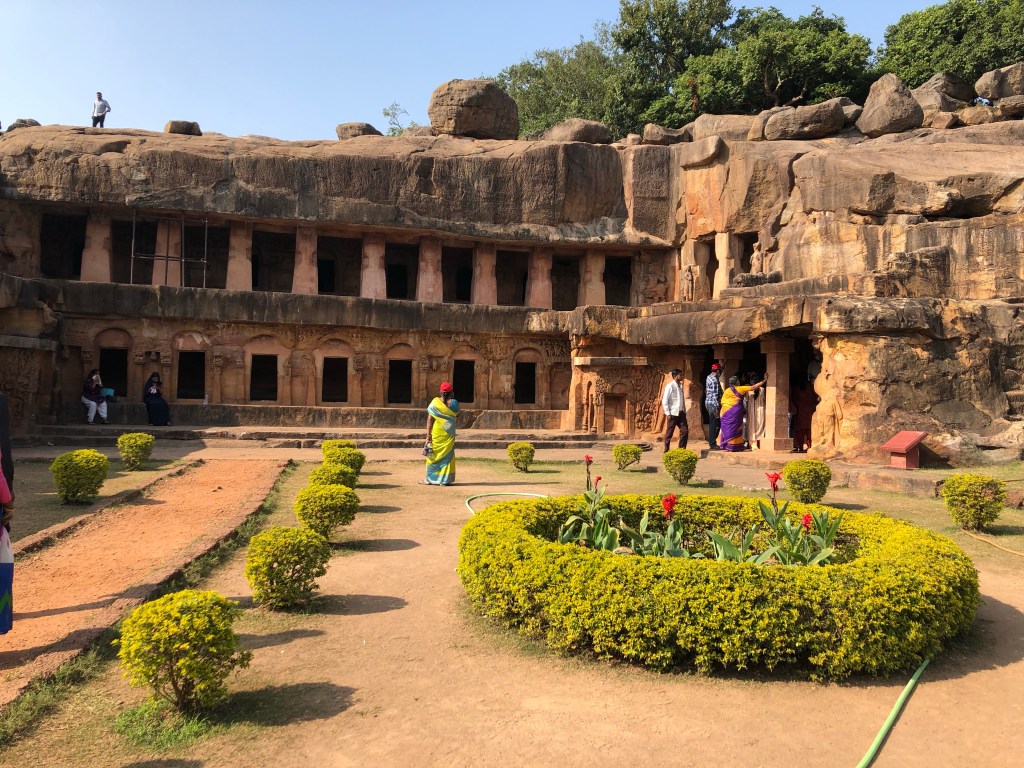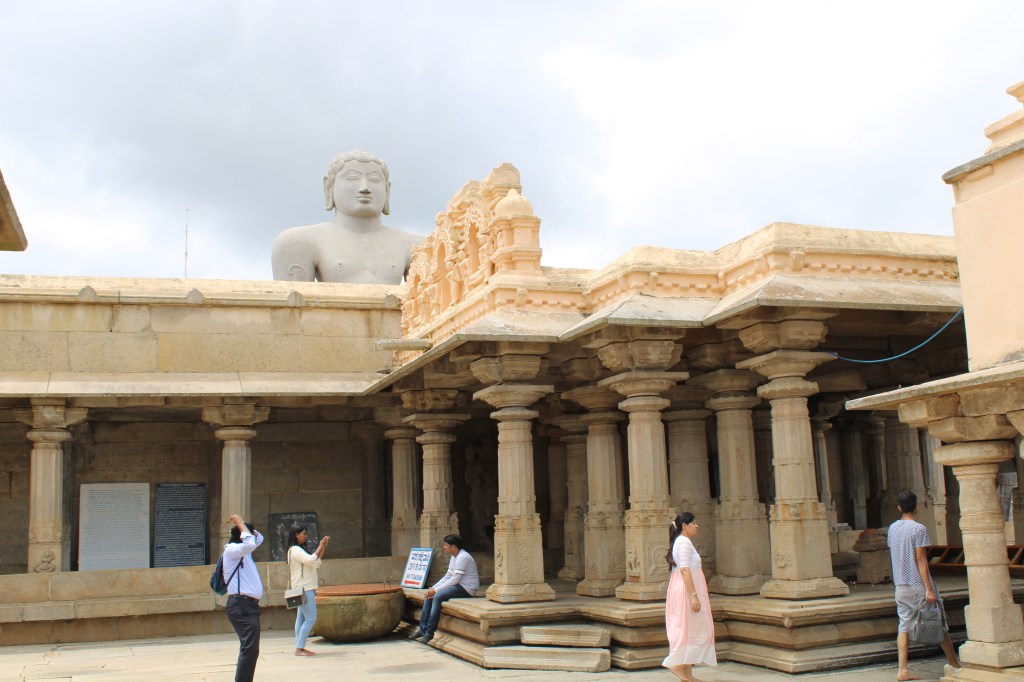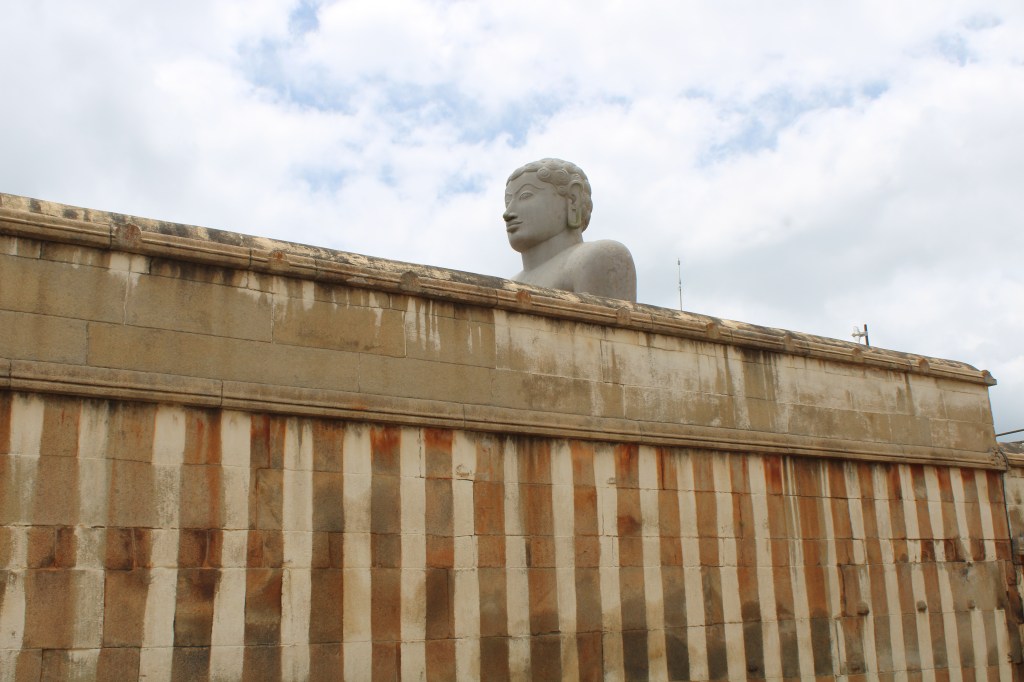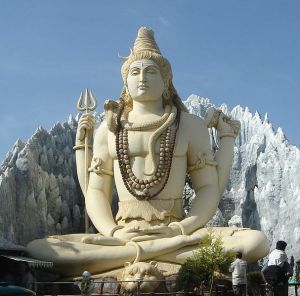Tag Archives: Jainism
DAILY PHOTO: Bahubali Above the Wall
DAILY PHOTO: Udayagiri Caves

DAILY PHOTO: Gomateshwara of Shravanabelagola

Taken on November 23, 2013 on Shravanabelagola Hill
[As I was on the road yesterday and missed my Daily Photo post, I’ll double up today—if I can. I’m iffy because Bangalore got 2” of rain in an hour last night (which we arrived home in; I saw a city bus literally—no hyperbole here whatsoever—half underwater in an underpass.) Anyway, my internet connection is spotty at the moment, and could go out permanently at any moment.]
The Gomateshwara (a.k.a. Bahubali) sculpture at Shravanabelagola is the world’s largest monolithic stone sculpture. Gomateshwara was a Jain Arihant, and was said to be the second of 100 sons of the first Tirthankara.
An Arihant–literally a “vanquisher of enemies” (a rather bellicose title for a sect that won’t eat onions because the plant must be killed to harvest them), is one who has defeated anger, ego, deception, and greed. (Oh, THOSE enemies. you say.) A Tirthankara is a special kind of Arihant that appears every so often to revitalize the Jain community.
Shravanabelagola is not a well-known site. Being in rural Karnataka, and not on the regular tourist loops, it’s easy to miss. However it can be grouped nicely with trips to the temples at Halebidu and Belur.
Tip 1: You’ll have to walk to the top of a rather large hill in bare feet, so be prepared. On the bright side, the steps are quite clean and devoid of the usual multi-species feces common to footpaths in India.
Tip 2: Jains, like Hindus and some Buddhist sects, utilize the swastik emblem heavily. Despite the ubiquity of what some call the “twisted cross” or “swastika,” you are not in a den of neo-Nazis. That emblem, and its mirror-image, was used for thousands of years in South Asia before Hitler co-opted the symbol—presumably misinterpreting its meaning (as he misinterpreted so many things.) Ironically, it means a wish for good fortune.
Paul Brunton’s Search for Sages in India
As I prepare to move to India, I’ve begun to read up on this subcontinent about which I know too little. For example, I’d never heard of Paul Brunton before a week ago, but now I am immersed in his book A Search in Secret India. Brunton was a Brit who, like a number of his contemporaries living in the first half of the 20th century, struck out to experience the mysteries locked in the heart of India. Like many, he wanted to gain access to the country’s treasure, but the treasure he sought had nothing to do with material wealth or ancient artifacts. He sought living sages, and the lessons they could teach him. The book I’m reading tells the story of this search.
Something about India drives internal reflection and the spirituality that often accompanies it. It’s the home of Hinduism, Buddhism, Sikhism, and Jainism, as well as many non-denominational wisemen (and wisewomen) who at once can be seen as followers of no religion and believers in many religions. Value for the unity of mind and body can be seen in the popular national practice of Yoga, which is the antithesis of mindless exercise in which one jumps on a treadmill with an i-Pod and zones out for an hour as one’s body churns through its paces. Yoga, like Tai Chi, requires one’s full attention, and that one’s movement, one’s breath, and one’s awareness are all working toward the same purpose.
So far, Brunton’s work has appealed to me not only because he is in search of wisdom, but because he goes about this pursuit as a skeptic. In the introduction he tells how he edited out the many meetings with charlatans and frauds. Charlatans always abound in the presence of sages because it’s quite lucrative to convince people that they can achieve self-improvement effortlessly through some patented approach. (I’m here to tell you that self-improvement is a struggle that requires your physical and mental energy all the way–what I cannot yet tell you is whether it is worth it or not.) If one cannot see the cloud-enshrouded destination, it’s easy to sell maps–whether one knows the route oneself or not–and many are all too ecstatic to buy a map that shows a secret route that takes them to the pinnacle by way exclusively downhill paths. The fact that Brunton enters his quest with a degree of skepticism suggests he didn’t fall for such traps; traps that should be obvious but that appeal to those for whom the force of wanting to believe is stronger than the force of truth. [As I am only a few chapters in, I reserve the right to change this prognosis. At some point, I’ll put up a review with my final thoughts.]
I look forward to discovering whether wisdom is alive and well on the subcontinent. Hopefully, the hucksters haven’t won the war for the mind’s of seekers.







